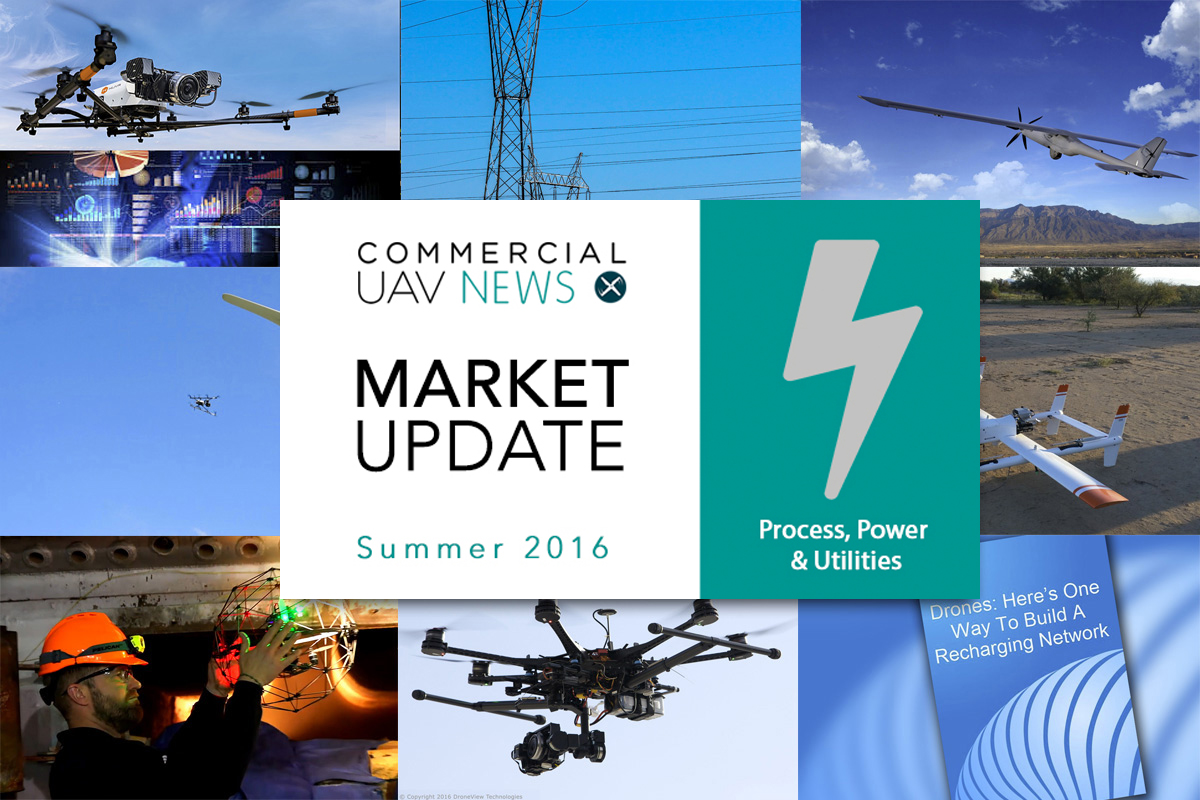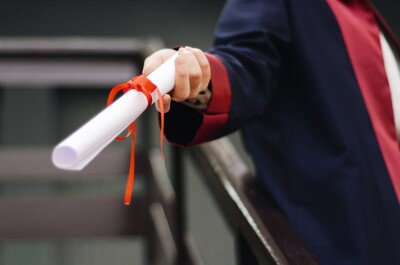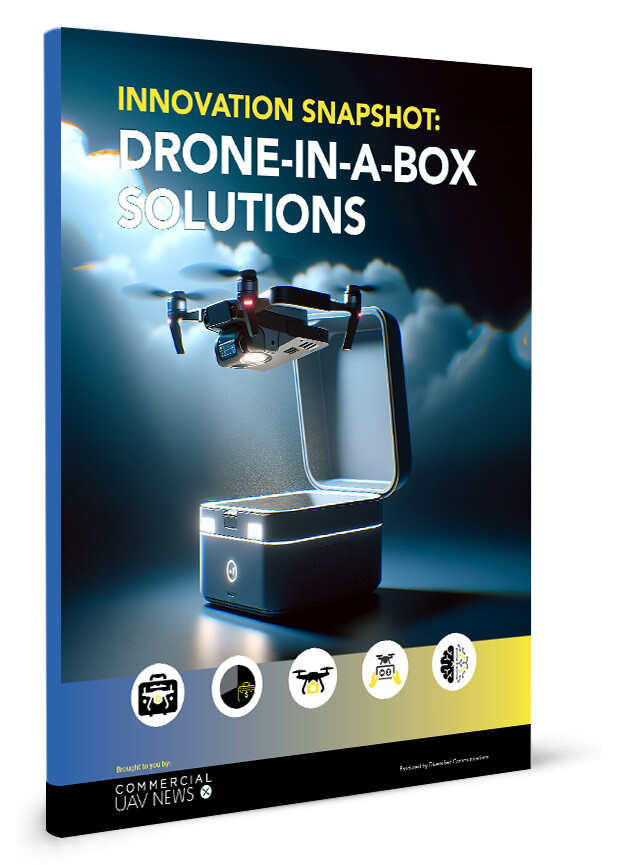From wind turbine inspection to long-range deliveries, UAVs are becoming more and more present in the daily life of utility professionals. They're flying beyond visual line-of-sight to help maintain power lines, and even inside towering boilers. No wonder that the idea of skyways for drones, along with a recharging infrastructure that can serve thousands, or millions of drones, are beginning to take shape across the world.Commercial UAV News recently published a couple articles that focus on this topic, as the team at Talon Aerolytics detailed why it's a mistake to wait to start flying a drone, while Todd Chase explained how oil and gas companies are looking to utilize UAVs. In light of Part 107, developments in this market will continue to gain traction and notoriety as professionals see and understand the many ways in which UAVs allow them to adjust their approach.The news items below represent just some of the most notable developments for UAVs in Process, Power & Utilities over the past few months.

 UAV’s survey PG&E gas and electric infrastructurePacific Gas & Electric company sees drone technology as an opportunity with safety and reliability benefits, so it has begun testing how it can use drones to help monitor and survey its gas and electric infrastructure. Currently, PG&E is in the research and development phase of drone use for its nearly 160,000 miles of electric lines in Northern and Central California.“Drones have incredible potential for improving the safety and reliability of our systems” says Eric Back, PG&E director of compliance and risk management, adding that “we want to roll out this program methodically and in alignment with the industry and are partnering with a number of industry organizations to help design requirements to ensure the safe operations of drones. These partnerships provide a valuable resource for identifying safe applications of this promising technology.”In the future, drones also could play a key role in PG&E’s efforts to detect and stop gas leaks. PG&E routinely patrols and surveys nearly 50,000 miles of gas pipelines for leaks using a variety of methods and technologies. Read the whole article to discover how Pacific Gas & Electric is working with NASA on some of these projects and why the company envisions drones playing a key role in storm and disaster response.
UAV’s survey PG&E gas and electric infrastructurePacific Gas & Electric company sees drone technology as an opportunity with safety and reliability benefits, so it has begun testing how it can use drones to help monitor and survey its gas and electric infrastructure. Currently, PG&E is in the research and development phase of drone use for its nearly 160,000 miles of electric lines in Northern and Central California.“Drones have incredible potential for improving the safety and reliability of our systems” says Eric Back, PG&E director of compliance and risk management, adding that “we want to roll out this program methodically and in alignment with the industry and are partnering with a number of industry organizations to help design requirements to ensure the safe operations of drones. These partnerships provide a valuable resource for identifying safe applications of this promising technology.”In the future, drones also could play a key role in PG&E’s efforts to detect and stop gas leaks. PG&E routinely patrols and surveys nearly 50,000 miles of gas pipelines for leaks using a variety of methods and technologies. Read the whole article to discover how Pacific Gas & Electric is working with NASA on some of these projects and why the company envisions drones playing a key role in storm and disaster response.  Cost-effective inspection of wind turbinesABS Group, a provider of technical inspection and verification services to the global power and wind energy industries, signed and agreement with DroneView Technologies to deliver joint aerial wind turbine and equipment inspections utilizing sophisticated drone technology as a cost-effective solution. They've recognized that drones provide a data-driven alternative to traditional inspections of aerial wind turbine blades at hazardous heights, which will drive safer, more efficient wind farm operations."Drone wind turbine inspections are a game changing solution for the wind industry, providing safer inspection techniques, faster turnaround times, lower operations and maintenance costs and improved reliability," says Ted Hofbauer, ABS Group Director of Renewables Business Development. "These inspections are ideal for maintenance and especially for emergency situations in which climbing is not possible," adds Michael Singer, CEO of DroneView Technologies.Potential damage to wind farm equipment will be surveyed using a drone controlled by a certified, licensed operator. The drone is capable of producing high-resolution photos and/or videos, which will be analyzed by an ABS Group wind turbine specialist. The data computed by the drone and transmitted in real time to the operator can be stored in a maintenance archive of valuable data for future reference. Follow the link for more information about this agreement.
Cost-effective inspection of wind turbinesABS Group, a provider of technical inspection and verification services to the global power and wind energy industries, signed and agreement with DroneView Technologies to deliver joint aerial wind turbine and equipment inspections utilizing sophisticated drone technology as a cost-effective solution. They've recognized that drones provide a data-driven alternative to traditional inspections of aerial wind turbine blades at hazardous heights, which will drive safer, more efficient wind farm operations."Drone wind turbine inspections are a game changing solution for the wind industry, providing safer inspection techniques, faster turnaround times, lower operations and maintenance costs and improved reliability," says Ted Hofbauer, ABS Group Director of Renewables Business Development. "These inspections are ideal for maintenance and especially for emergency situations in which climbing is not possible," adds Michael Singer, CEO of DroneView Technologies.Potential damage to wind farm equipment will be surveyed using a drone controlled by a certified, licensed operator. The drone is capable of producing high-resolution photos and/or videos, which will be analyzed by an ABS Group wind turbine specialist. The data computed by the drone and transmitted in real time to the operator can be stored in a maintenance archive of valuable data for future reference. Follow the link for more information about this agreement.  UAV’s for long-range deliveriesIn a development that could impact how resources are transported across a nation and even internationally, Valmie Resources announced its joint venture partner, AeroLift eXpress, is in dialog with a major Latin American energy company’s prime contractor regarding daily, unmanned offshore transport. The contractor represents numerous and significant providers throughout Latin America, and their desire to add AeroLift to their portfolio could change the traditional approach these organizations have taken.“AeroLift is a one-of-a kind service,” said James Stafford, AeroLift eXpress CEO and Founder. “AeroLift offers long endurance and long range deliveries of payloads up to 14 pounds within an operating radius of 250 miles, as opposed to our competitors who are limited to an operating range of three-quarters of a mile.”Reports have shown that returns on capital in the oil and gas sector have halved since 2007, which has meant curbing and limiting costs on procedures like transport are more important than ever, Follow the link to learn more about AeroLift’s platform.
UAV’s for long-range deliveriesIn a development that could impact how resources are transported across a nation and even internationally, Valmie Resources announced its joint venture partner, AeroLift eXpress, is in dialog with a major Latin American energy company’s prime contractor regarding daily, unmanned offshore transport. The contractor represents numerous and significant providers throughout Latin America, and their desire to add AeroLift to their portfolio could change the traditional approach these organizations have taken.“AeroLift is a one-of-a kind service,” said James Stafford, AeroLift eXpress CEO and Founder. “AeroLift offers long endurance and long range deliveries of payloads up to 14 pounds within an operating radius of 250 miles, as opposed to our competitors who are limited to an operating range of three-quarters of a mile.”Reports have shown that returns on capital in the oil and gas sector have halved since 2007, which has meant curbing and limiting costs on procedures like transport are more important than ever, Follow the link to learn more about AeroLift’s platform.  Recharging Network for UAVsIn the future some drones will deliver packages, others will travel to complete assigned tasks, and some will collect data to form a 3D map. This is just the beginning of the possibilities though, drones might soon be working as part of the emergency services - perhaps a ‘fire alert’ drone will automatically be deployed to investigate a report of smoke coming from a forest.For all these drones to fulfill their tasks there needs to be a defined and regulated network of Skyways used by drones to accomplish their tasks. There also has to be a recharging infrastructure that can serve thousands, or millions of drones automatically, and on a national or even global basis. How can and will this infrastructure come together though?That’s the subject of a recent report, “Drones: Here’s One Way To Build A Recharging Network” published by Research & Markets. Follow the link to read more about the document.
Recharging Network for UAVsIn the future some drones will deliver packages, others will travel to complete assigned tasks, and some will collect data to form a 3D map. This is just the beginning of the possibilities though, drones might soon be working as part of the emergency services - perhaps a ‘fire alert’ drone will automatically be deployed to investigate a report of smoke coming from a forest.For all these drones to fulfill their tasks there needs to be a defined and regulated network of Skyways used by drones to accomplish their tasks. There also has to be a recharging infrastructure that can serve thousands, or millions of drones automatically, and on a national or even global basis. How can and will this infrastructure come together though?That’s the subject of a recent report, “Drones: Here’s One Way To Build A Recharging Network” published by Research & Markets. Follow the link to read more about the document.  Emirates Steel uses drones in maintenance planEmirates Steel is pioneering the use of unmanned aerial vehicles (UAVs) at its plants, which is helping to save millions of Dirhams for the Abu Dhabi-based company.The country’s largest steel maker is one of the first UAE industrial groups to use drones to inspect live flares at two direct-reduction plants at its complex in Industrial City Abu Dhabi, in Mussaffah. Sky-Futures, a UK company, has deployed a drone on behalf of Emirates Steel to inspect two flares – 70-feet Bunsen burners which flare off gases that are a by-product of the manufacturing process.The UAVs helped the steel plant avoid a five-day shutdown, which is typically required to inspect the flares. Follow the link to read the whole article and find out how a similar project in Egypt enabled one company to avoid a five-day shutdown, which resulted in savings of more than $3.7 million.
Emirates Steel uses drones in maintenance planEmirates Steel is pioneering the use of unmanned aerial vehicles (UAVs) at its plants, which is helping to save millions of Dirhams for the Abu Dhabi-based company.The country’s largest steel maker is one of the first UAE industrial groups to use drones to inspect live flares at two direct-reduction plants at its complex in Industrial City Abu Dhabi, in Mussaffah. Sky-Futures, a UK company, has deployed a drone on behalf of Emirates Steel to inspect two flares – 70-feet Bunsen burners which flare off gases that are a by-product of the manufacturing process.The UAVs helped the steel plant avoid a five-day shutdown, which is typically required to inspect the flares. Follow the link to read the whole article and find out how a similar project in Egypt enabled one company to avoid a five-day shutdown, which resulted in savings of more than $3.7 million.  UAVs for inspection inside towering boilersWe always think of drones connected to surveillance that is being done outdoors, but Con Edison is testing drones to carry inspection cameras inside the towering boilers that produce steam for some of New York City's most iconic buildings.“Inspecting our boilers requires workers to build up to 10-story scaffolding and go through confined-space training,” said Margarett Jolly, director of Research and Development for Con Edison. “Using innovations in technology, we can speed up the process while still upholding and perhaps improving quality and safety.”The company is testing the drone technology as a way to reduce the time and cost it takes to inspect the boilers, which are an integral part of the largest district steam system in the world. The drones use video, camera, and thermal technology to produce images in real time. Con Edison personnel can quickly analyze the data and determine where the company needs to make repairs or perform maintenance. Follow the link to read the whole story and watch a video of the drone at work inside the boilers.
UAVs for inspection inside towering boilersWe always think of drones connected to surveillance that is being done outdoors, but Con Edison is testing drones to carry inspection cameras inside the towering boilers that produce steam for some of New York City's most iconic buildings.“Inspecting our boilers requires workers to build up to 10-story scaffolding and go through confined-space training,” said Margarett Jolly, director of Research and Development for Con Edison. “Using innovations in technology, we can speed up the process while still upholding and perhaps improving quality and safety.”The company is testing the drone technology as a way to reduce the time and cost it takes to inspect the boilers, which are an integral part of the largest district steam system in the world. The drones use video, camera, and thermal technology to produce images in real time. Con Edison personnel can quickly analyze the data and determine where the company needs to make repairs or perform maintenance. Follow the link to read the whole story and watch a video of the drone at work inside the boilers.  Cyberhawk drone inspects wind turbinesCyberhawk Innovations has secured significant works with SSE Plc, one of the UK’s largest energy companies, to carry out close visual inspections of more than 600 wind turbine blades using UAVs. Work will be completed across wind turbines at various SSE windfarms throughout Scotland, Northern Ireland and Republic of Ireland.Traditionally, inspections would be carried out using rope access technicians. However, this technique involves a greater number of man hours required on site and increased working at height. UAV technology not only mitigates these risks, but also means reduced turbine downtime for the client and therefore less lost production. One of Cyberhawk’s key differentiators is the ability to inspect three to five turbines per day, compared with rope access which will typically only inspect one.Cyberhawk’s drone inspection solution captures images of the entire blade surface of every turbine, allowing the company’s highly experienced wind engineers to accurately locate, size and categorize any defects. Follow the link to read the whole story about this project from Cyberhawk, a company that carried out the very first ROAV industrial inspection in 2009.Flying Beyond the Operator’s Line of Sight
Cyberhawk drone inspects wind turbinesCyberhawk Innovations has secured significant works with SSE Plc, one of the UK’s largest energy companies, to carry out close visual inspections of more than 600 wind turbine blades using UAVs. Work will be completed across wind turbines at various SSE windfarms throughout Scotland, Northern Ireland and Republic of Ireland.Traditionally, inspections would be carried out using rope access technicians. However, this technique involves a greater number of man hours required on site and increased working at height. UAV technology not only mitigates these risks, but also means reduced turbine downtime for the client and therefore less lost production. One of Cyberhawk’s key differentiators is the ability to inspect three to five turbines per day, compared with rope access which will typically only inspect one.Cyberhawk’s drone inspection solution captures images of the entire blade surface of every turbine, allowing the company’s highly experienced wind engineers to accurately locate, size and categorize any defects. Follow the link to read the whole story about this project from Cyberhawk, a company that carried out the very first ROAV industrial inspection in 2009.Flying Beyond the Operator’s Line of Sight Xcel Energy inspects more than 320,000 miles of electricity and natural gas infrastructure to ensure the safety and reliability of its energy system, and helicopters have been the primary means of accessing lines in rugged terrain. In 2015, Xcel Energy began a program of visually inspecting substations in Texas with drones, which are operated within the line of sight of the operator. Last February the company used contractors, Environmental Consultants Inc. & FLōT Systems, to fly an unmanned inspection using a system that allows the aircraft to fly beyond the line of sight of the operator (BVLOS), a first for U.S. electric utility companies.“Xcel Energy is committed to embracing new technologies that allow us to work safer, more efficiently and at lower costs than before, and the unmanned aircraft systems are a great example of boosting our productivity through technology,” said Teresa Mogensen, Xcel Energy’s senior vice president for transmission. “Employees will also use drones to observe environmentally sensitive areas without the use of trucks, helicopters or other utility equipment, minimizing the environmental impact,” she added.Follow the link to read more about the use of beyond visual-line-of-sight unmanned aircraft mission by Xcel Energy on the area known as the Canadian River Breaks north of Amarillo in the Texas Panhandle.
Xcel Energy inspects more than 320,000 miles of electricity and natural gas infrastructure to ensure the safety and reliability of its energy system, and helicopters have been the primary means of accessing lines in rugged terrain. In 2015, Xcel Energy began a program of visually inspecting substations in Texas with drones, which are operated within the line of sight of the operator. Last February the company used contractors, Environmental Consultants Inc. & FLōT Systems, to fly an unmanned inspection using a system that allows the aircraft to fly beyond the line of sight of the operator (BVLOS), a first for U.S. electric utility companies.“Xcel Energy is committed to embracing new technologies that allow us to work safer, more efficiently and at lower costs than before, and the unmanned aircraft systems are a great example of boosting our productivity through technology,” said Teresa Mogensen, Xcel Energy’s senior vice president for transmission. “Employees will also use drones to observe environmentally sensitive areas without the use of trucks, helicopters or other utility equipment, minimizing the environmental impact,” she added.Follow the link to read more about the use of beyond visual-line-of-sight unmanned aircraft mission by Xcel Energy on the area known as the Canadian River Breaks north of Amarillo in the Texas Panhandle.  Solar UAV Inspects Oil and Gas OperationsThe patent pending Silent Falcon solar electric, carbon fiber, modular small Unmanned Aircraft System (sUAS) has successfully performed flights to demonstrate its effectiveness to inspect and monitor oil and gas production and distribution assets. The flights were performed over 2 days in northwestern New Mexico for a leading international oil and gas company and were flown under the direction of Indiana State University in compliance with the FAA COA issued to them permitting them to conduct these flights.The company behind the UAV, Silent Falcon, believes this is the first time a fixed wing, long range and long endurance unmanned aircraft system has been used for this purpose in the continental United States. Silent Falcon’s solar electric propulsion systems gives it the unique ability to stay in the air for extended periods of time – five or more hours depending on environmental conditions. It’s also what gives the Silent Falcon its ability to be virtually silent. Once the Silent Falcon reaches 100 meters, it’s effectively undetectable.Designed for numerous commercial, public safety, military and security applications, the Silent Falcon provides exceptional durability while flying in all types of conditions, as well as for launch and recovery. It’s also very lightweight for ease of transport and in-air maneuverability. Follow the link to find more information about the multiple capabilities of the Silent Falcon.
Solar UAV Inspects Oil and Gas OperationsThe patent pending Silent Falcon solar electric, carbon fiber, modular small Unmanned Aircraft System (sUAS) has successfully performed flights to demonstrate its effectiveness to inspect and monitor oil and gas production and distribution assets. The flights were performed over 2 days in northwestern New Mexico for a leading international oil and gas company and were flown under the direction of Indiana State University in compliance with the FAA COA issued to them permitting them to conduct these flights.The company behind the UAV, Silent Falcon, believes this is the first time a fixed wing, long range and long endurance unmanned aircraft system has been used for this purpose in the continental United States. Silent Falcon’s solar electric propulsion systems gives it the unique ability to stay in the air for extended periods of time – five or more hours depending on environmental conditions. It’s also what gives the Silent Falcon its ability to be virtually silent. Once the Silent Falcon reaches 100 meters, it’s effectively undetectable.Designed for numerous commercial, public safety, military and security applications, the Silent Falcon provides exceptional durability while flying in all types of conditions, as well as for launch and recovery. It’s also very lightweight for ease of transport and in-air maneuverability. Follow the link to find more information about the multiple capabilities of the Silent Falcon.  UAVs and amphibious robots to survey power linesFlorida Power & Light Company (FPL) conducted their annual storm drill in May and used the occasion to demonstrate the potential of an Unmanned Aircraft System (UAS) and an amphibious robot, both of which provide the company greater visibility of damage and speed restoration in the aftermath of a hurricane.During the drill, FPL demonstrated how emerging technologies are changing the way field employees assess damage in the aftermath of a storm – from drones that can survey overhead power line damage, to amphibious robots that can provide access to unsafe, flooded areas. In addition, the company's mobile application puts damage information at the fingertips of restoration crews after a storm passes.Drones are among the tools that have led to results which have led to a more efficient and accurate process when restoring power. Follow the link to read the whole story of Florida Power & Light Company (FPL) drill.
UAVs and amphibious robots to survey power linesFlorida Power & Light Company (FPL) conducted their annual storm drill in May and used the occasion to demonstrate the potential of an Unmanned Aircraft System (UAS) and an amphibious robot, both of which provide the company greater visibility of damage and speed restoration in the aftermath of a hurricane.During the drill, FPL demonstrated how emerging technologies are changing the way field employees assess damage in the aftermath of a storm – from drones that can survey overhead power line damage, to amphibious robots that can provide access to unsafe, flooded areas. In addition, the company's mobile application puts damage information at the fingertips of restoration crews after a storm passes.Drones are among the tools that have led to results which have led to a more efficient and accurate process when restoring power. Follow the link to read the whole story of Florida Power & Light Company (FPL) drill.  Collaboration to Optimize Wind Turbine InspectionsHUVRdata and EdgeData announced a collaboration to deliver a suite of wind industry data intelligence tools and credential processes to optimize the use of this technology within the wind industry. The collaboration will leverage multiple points of synergy between the two companies, including HUVRdata’s data capture capabilities and cloud based services and EdgeData’s BladeEdge analytics software for automated blade condition assessment.The scope of the collaboration spans data capture, software analytics tools, data handling and reporting. HUVRdata, which holds a 333 exemption for wind turbine inspections and is the first company to be credentialed by the National UAS Credentialing Program, will be added as an EdgeData Unmanned Service Provider (USP) to provide safe, reliable turbine inspection data.“This partnership will give wind professionals more powerful tools for delivering ROI, with an unprecedented range and depth of data collection, analytics and reporting capabilities,” said Chris Shroyer, President of EdgeData. “It is about the data and the associated intelligence – this is the future of the wind industry.” Follow the link to read the whole story. Want to see something included in our next Market Update? Send us an email or get in touch with us on Twitter or Facebook.
Collaboration to Optimize Wind Turbine InspectionsHUVRdata and EdgeData announced a collaboration to deliver a suite of wind industry data intelligence tools and credential processes to optimize the use of this technology within the wind industry. The collaboration will leverage multiple points of synergy between the two companies, including HUVRdata’s data capture capabilities and cloud based services and EdgeData’s BladeEdge analytics software for automated blade condition assessment.The scope of the collaboration spans data capture, software analytics tools, data handling and reporting. HUVRdata, which holds a 333 exemption for wind turbine inspections and is the first company to be credentialed by the National UAS Credentialing Program, will be added as an EdgeData Unmanned Service Provider (USP) to provide safe, reliable turbine inspection data.“This partnership will give wind professionals more powerful tools for delivering ROI, with an unprecedented range and depth of data collection, analytics and reporting capabilities,” said Chris Shroyer, President of EdgeData. “It is about the data and the associated intelligence – this is the future of the wind industry.” Follow the link to read the whole story. Want to see something included in our next Market Update? Send us an email or get in touch with us on Twitter or Facebook. 















Comments